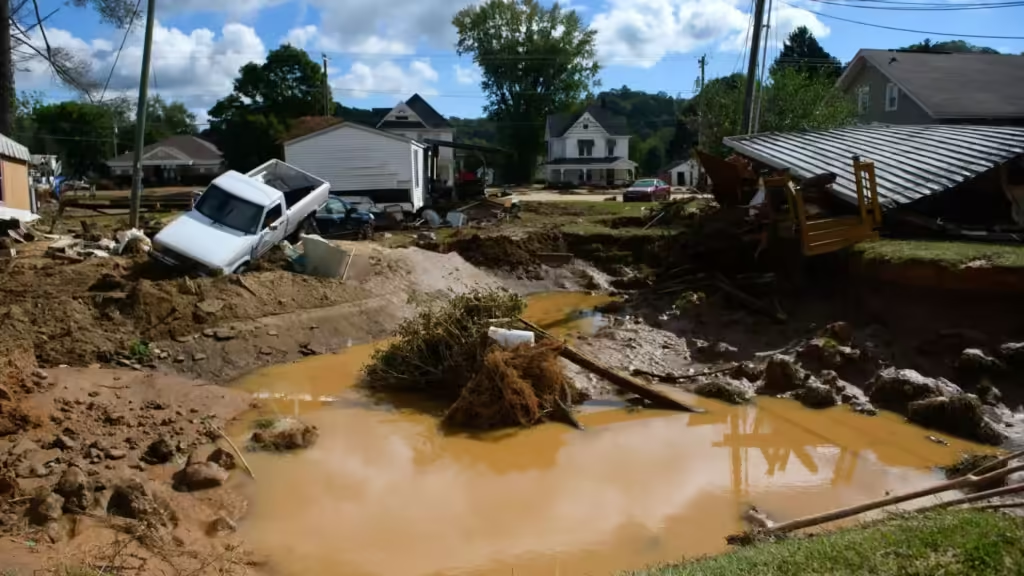Hurricane Helene Death Toll the first thing that comes to mind for everyone after a hurricane is, “How many lives were lost?”
Helene, the hurricane, was no different. Even if the hurricane wasn’t as bad as some others, it was nevertheless scary and devastating.
What precisely transpired, then? How many people have died as a result of Hurricane Helene Death Toll, and how many more have died in total?
Let’s dissect it.
How Deadly Was Hurricane Helene?
One important piece of information regarding Hurricane Helene death toll. Even though it wasn’t the storm with the most damage, any fatality is tragic.
The thing about Hurricane Helene is this: Although it didn’t create as much destruction as Hurricanes Harvey or Katrina, it nevertheless had an effect on individuals. Numerous hurricanes have the potential to cause damage by strong winds, storm surges, and indirect consequences like flooding, even when they don’t make landfall.
Although the precise figure of deaths associated with Hurricane Helene may differ throughout sources, indirect deaths are frequently included in the final count. In these situations, people may have perished in floods or in mishaps brought on by the storm’s aftermath.
People sometimes underestimate the dangers of hurricane conditions, and Helene was no exception.
The Path of Hurricane Helene
Like many other tropical systems, Hurricane Helene began as a hurricane in the Atlantic Ocean. What’s crucial to note is that Helene didn’t make a direct impact on the U.S. mainland, which is one reason why the death toll remained relatively low.
It’s not innocuous, though, just because it didn’t crash ashore. Conditions became hazardous as Hurricane Helene rolled across the Atlantic, particularly for those along the coast. Even in locations not directly in the storm’s path, warnings and evacuations were issued due to high waves, strong gusts, and rip currents.
Key facts about Helene’s path:
- originated close to Africa in the eastern Atlantic.
- reached hurricane force, reaching speeds of more than 100 mph.
- lingered at sea for the most of its time as a “fish storm.”
- caused unintended consequences in portions of Europe and the U.S. East Coast, such as hazardous rip currents and waves.
Why Do Hurricanes Like Helene Still Cause Deaths?
One would imagine that a storm would be less deadly if it missed landfall. However, that’s where a lot of individuals make mistakes.
- Hurricanes like as Helene remain deadly because of:
Storm surges: Coastal locations can be inundated by storm surges even when they are far from the hurricane’s center. - Rip currents: Even the most seasoned swimmers can be caught off guard by these powerful currents, which can result in drowning.
- Debris in the air: Strong winds have the power to propel small items into the air.
Flooding caused by heavy rain: Although flash floods are rarely realized, they can happen far inland from the storm’s original passage.
Because of Hurricane Helene’s ferocity, even though it missed many populous areas, those who lived along the coast were still in risk.
Death Toll Comparisons: Helene vs Other Hurricanes
Although Hurricane Helene’s death toll was not very high, it is nevertheless important to consider the magnitude in relation to prior storms.
- Hurricane Katrina (2005): Over 1,800 deaths and massive damage to the Gulf Coast.
- Hurricane Harvey (2017): Caused 107 fatalities, primarily from massive flooding in Texas.
- Hurricane Irma (2017): Led to 134 deaths, with much of the destruction in the Caribbean.
Hurricane Helene, on the other hand, did not result in hundreds of deaths. That does not negate the threat, though. Every hurricane has the potential to be fatal because to its secondary impacts, such as flooding and rip currents, regardless of whether it reaches landfall.
Why Understanding the Hurricane Helene Death Toll
The number of fatalities from hurricanes like Helene allows us to gauge their severity. However, it goes beyond the figures.
The death toll is frequently a measure of how prepared we were, how seriously we took the warnings, and whether or not we responded in time.
The fact that Helene posed a long-range hazard accounted for a large portion of the danger. Being indirect did not inevitably cause people to get alarmed. However, storms that remain at sea can still be fatal, particularly if people don’t realize how powerful the ocean can be.
How to Stay Safe During Hurricane Helene Death Toll
Hurricanes like Helene are just a few examples of how crucial it is to remain vigilant and organized. Whether it’s a direct hit or a distant storm, taking preparations can save lives.
Here are some pointers to remember:
1. Never Ignore Weather Warnings
Take local officials’ warnings of storm surges or severe surf seriously, even if a hurricane is far from land. Never assume that you are secure from a storm just because it is offshore.
2. Stay Away from the Coast
While it may seem apparent, it can be alluring to visit the beach and observe the waves during a storm. Avoid it. Waves have the power to sweep you off your feet before you even realize what’s happening, and rip currents can be fatal.
3. Prepare for Flooding
If you live in a low-lying location or next to the water, remember that flooding might result from a storm that is far away. Be aware of your escape routes and prepared to act swiftly if needed.
4. Watch for Debris
Strong winds have the ability to create harm even when the storm is far away. Trim tree limbs, lock down outdoor furniture, and keep an eye out for flying debris that could hurt you or damage your property.
FAQs About Hurricane Helene Death Toll
Q: Did Hurricane Helene make landfall?
A: No, Hurricane Helene stayed offshore, but it still created hazardous conditions in areas of Europe and the East Coast of the United States.
Q: How many people died because of Hurricane Helene Death Toll?
A number of indirect deaths were brought on by the storm’s rip currents and other storm-related risks, while the precise death toll is unknown.
Q: Why was Hurricane Helene considered dangerous if it didn’t hit land?
A: Even if hurricanes like Helene miss landfall, they can still create hazardous surf conditions, rip currents, and coastal floods. Even with these indirect consequences, fatalities are still possible.
Q: Can hurricanes cause deaths even without making landfall?
A: In agreement. Indirect mortality from hurricanes can result from rip currents, flying debris, flooding, and storm surges. People frequently don’t realize how dangerous these side effects might be.
Lessons Learned from Hurricane Helene
The lesson from Hurricane Helene Death Toll is very clear: storms should not be taken lightly because they are offshore.
Because of the mortality toll, it is important to remember how destructive even hurricanes that miss landfall may still be.
It’s critical to be ready for future hurricane seasons, pay attention to advisories, and remember that the ocean’s force doesn’t always need to be just outside your home to be dangerous.
Recall that being vigilant equates to being safe.



